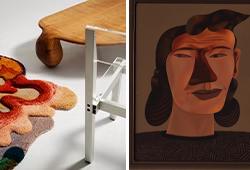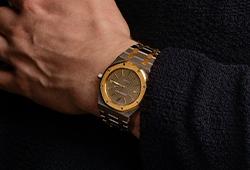Knut Fjaestad
an Art Nouveau sculptured and carved pine throne, Sweden early 20th century.
Measurements ca 72 x 83 cm, height 116 cm, seat height ca 52,5 cm.
Small damages and dry cracks, one broken rod at the one side is reinforced to the reverse.
Täydennyslista
Föremålet belagt med exportrestriktioner/ Export restrictions
Alkuperä - Provenienssi
Knut Fjaestad, thence by descent.
The chair has been called "The Seven Years Throne" (Sjuårstronen) within the family since it took Knut Fjaestad seven years to complete the chair.
Muut tiedot
Knut Fjaestad (1860-1937)
He was the older brother of the well known artist Gustaf Fjaestad. Throughout his adult life, Knut used every single free moment to make sculptures in pine wood.
Their father was born in Norway and was trained in shoemaking in Paris. On returning to Sweden, the father stayed in Stockholm and became a commander of the Queen Desirée. The shoemaker's had at least thirty employees.
When grown-up Knut bought a property in Gamla Stan, in Stockholm where he lived and also opened a syltheatry shop / fashion shop.
In 1907, Knut bought a house at Skärsätra just outside Stockholm, a 18th century property that he carefully restored.
In the 1920s Knut Fjaestad started a company for the wine-making of Swedish berries.
The wine-making consisted of both a Madeira type of wine as well as red wine.
The wine was called "Bjälbo-vintage" and the production was considered very successful.
With the outbreak of the second world war and consequent sugar deficiency, the production had to be shut down.
Knut Fjaestad remained in the same house at Lidingö throughout his life.
In addition to his great entrepreneurship, Knut seems to have loved to create in wood and especially in pine wood.
Knut and his brother Gustaf Fjaestad were close.
It is hard to say who of the brothers initially began to sculpt the furniture in the unique, naturalistic Art Nouveau-style that both brothers applied.
The earliest known work by Gustaf Fjaestad was dated in 1894 (Bukowskis Moderna Katalog nr 553, lot nr 709, October 2009).
Probably it was Gustaf Fjaestad who inspired Knut to begin with the carving.
After 1907 Knut was able to work in his own workshop at home with his sculptures, something he continued to do throughout his life.
This is Knut Fjaestad's masterpiece, a throne chair in full-fledged jugend which took him seven years to complete.




































































































